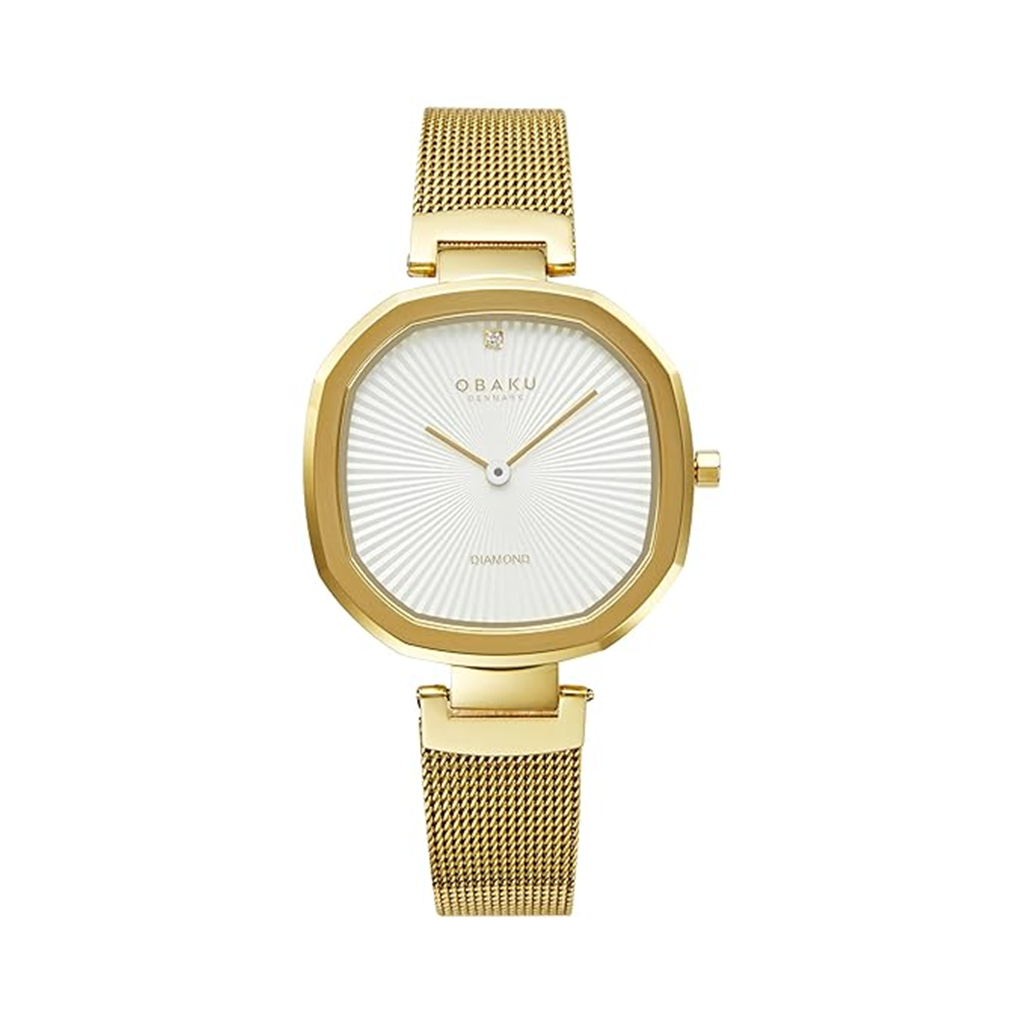The Obaku Denmark Brilliant Gold watch features a 32mm gold-tone case with a slim 4.8mm profile, combining elegance with everyday ease. Its silver sunburst dial creates a subtle 3D effect, highlighted by a genuine 1mm SI1 single-cut diamond at the 12 o’clock mark. Finished with a gold stainless steel mesh bracelet (14x12mm) and a scratch-resistant sapphire crystal, this timepiece runs on a minimalist two-hand movement and offers 3 ATM water resistance.
Refined and graceful, this piece balances softness and structure. The octagonal case and shimmering mesh strap add vintage-inspired charm, while the dial remains clean and modern. Ideal for polished daytime looks or understated evening wear, it’s a watch that carries quiet sophistication in every detail.
Diamonds in Watches: A Tradition Dating Back to the 19th Century
The use of diamonds in watches began in the early 1800s, as timepieces evolved from utilitarian tools into expressions of personal luxury. One of the earliest known examples is the Breguet No. 611, created in 1810 for Caroline Murat, Queen of Naples—widely considered the first wristwatch, it featured ornate detailing and likely included gemstones. By the late 19th century, Swiss houses like Patek Philippe and Vacheron Constantin were creating pocket watches and wristwatches adorned with diamonds, catering to aristocrats and high society.
In these early designs, diamonds were often bezel-set or used to mark key hours, with particular emphasis on the 12 o'clock position—a tradition that lives on in modern minimalist styles like the Brilliant Gold. Rather than overwhelming the dial, a single diamond serves as a refined focal point, continuing a legacy that merges watchmaking with fine jewelry.


